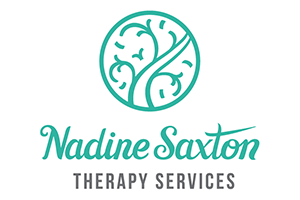The Five R’s
Life is messy! In any relationship, conflicts happen. But a strong relationship isn’t one without conflict: it’s one where people move through conflict and emerge more securely attached.
In my practice I talk about “the 5 R’s”: the journey we move through to arrive at a sense of stability and belonging in our relationships. The Five R’s are: Rupture, Resentment, Responsibility, Repair, and Resilience. Let’s take a journey through these five steps, and see how things look on the other side.
Ruptures
“Who left the toothpaste lid off?”
Who didn’t take out the garbage? Who splashed, dropped, didn’t wipe up, didn’t do their part? Who left me to deal with this all alone?
Ruptures are those moments when we feel missed, slighted, or ignored by the people we count on to be there for us. Ruptures happen on a daily basis: in real life, they’re impossible to avoid. The good news is that one rupture is often easy to repair. Where we get in trouble is when we pretend ‘it’s fine’ and let all those ruptures bubble away on the back burner until they’re ready to boil over. We may be unconsciously doing this on purpose, so we feel justified when we blow up. But even though ‘just getting on with it’ can make us feel like we have some control, some order in our lives, it’s a sure way to generate Resentment.
Resentments
“Resentment is like drinking poison and waiting for the other person to die.”
—Carrie Fisher
‘Resentment’ literally means ‘re -sentiment’: ‘sentiment’ meaning ‘feeling’ and ‘re’ meaning ‘again.’ By this definition, a resentment is literally ‘feeling again’ by recycling old negative feelings, or revisiting old wrongs done to us by others.
Recognizing resentments is a good place to start with conflict resolution, especially since the resentments we have are often externalized feelings of anger or disappointment with ourselves. When we don’t know how to say ‘no’ (or don’t feel we can say ‘no’) we can begin to feel resentment towards the other person and blame them for arousing those feelings in us.
Once we’re aware of our own resentments, we can get a more accurate picture of our relationship. What’s ‘on my side of the street’, and what’s on theirs? We call this taking Responsibility, and it’s the first step toward establishing a safe and secure connection.
Taking Responsibility
A good place to start is by checking in with your bodily self.
What’s happening in my nervous system? How fast is my heartbeat right now? Am I ramped up and raring for a fight? Am I feeling grounded and secure right now? Or am I so far outside my window of tolerance that I can’t hear or receive anything that the other person is bringing to the conversation?
When we can name our resentment, we can claim it, and in so doing take responsibility for our feelings. We can work to tidy up our side of the street, so we’re justified in asking our partner to tidy up theirs. We can also recognize that the resentment may be valid, and that yes, it may be triggered by a repeated action on our partner’s part.
Simply acknowledging “yes I did that, and I am sorry, and I will not do it again”, builds trust and helps repair this part of your relationship.
It’s a necessary first step. But we all know the politician who says, ‘I see you; I hear you’ and then doesn’t change anything. In order to truly repair our ruptures and resentments, we need to take responsibility and then follow through!
Repair
Repair is a process of negotiation, introspection, and hard work! Hard work requires good tools. Here are some of the tools and concepts I use in my practice.
Active Listening
Conflict resolution requires Active Listening, which involves listening with all your senses. It’s important for the listener to give their full attention to the speaker, but it’s also important for them to be seen and felt to be listening.
We can communicate this attention with verbal and non-verbal cues, such as: maintaining eye contact, nodding and smiling, and encouraging them to continue by saying ‘Yes’ or simply ‘Mmhm’. By repeating what the other person has said (using their tone and phrasing) we can show we’re invested in understanding them and their needs: “So what I hear you saying is that when I leave the toothpaste lid off, you feel I’m telling you I don’t care about you, have I got it right?”
Active listening is a respectful and responsive way to feel seen and heard by each other. It takes time, but it’s the best way to avoid the Close Community Bias, which is when we think we know our partner so well that we jump to conclusions about what they’ll say or think or do. But none of us is a mind reader! If we want to know, it’s incumbent upon us to ask.
Reframing
If you show me a thousand trees and I say, ‘Well that’s all well and good, but where’s the forest’, then I need to reframe my thinking!
Reframing, in this context, is about looking at a situation, thought, or feeling from another angle. Often, when we’re in conflict it’s because can’t see the forest for the trees. But by changing our frame, we can zoom out to the clarifying broader context, or zoom in on the relevant detail. If we can’t seem to find common perspectives with our partner, a reframing of our perspective might be the tool that we need.
Setting and Respecting Boundaries
Social Scientist and author Brené Brown says healthy people have healthy boundaries. We’re responsible for containing our feelings and asking for what we want and need. We’re also responsible for accepting that our needs may not always be met by our partners all of the time. When our partner says ‘no’, it’s important we respect that. But it’s also important to respect ourselves enough to say ‘no’. We can create healthy boundaries when we’re able to actively hear how the other person wants to be treated.
Co-Regulation
Being Regulated means being in a calm, receptive, socially available state. But the latest neuroscience tells us there is no such thing as ‘self-regulation’. Our nervous systems and brains are constantly looking for the safety and belonging of securely-attached relationships. To be around people we know will care for and comfort us when we need it, to know we matter. We have a biological imperative to connect. And when both parties feel nurtured, supported and safe in a relationship; when both parties feel actively listened to, feel their perspective is framed and seen, feel their boundaries are respected, and feel the other person is a safe partner in co-regulation, it becomes easy to repair new ruptures. We call this Resilience.
Resilience
No matter the content, according to Emotional Focused Therapy founder Sue Johnson, there are three underlying questions we are asking when we get into conflict with our people: “Are you there for me? Do I matter to you? Will you come when I call?”
Resilience in a relationship means a readiness to be present and listen to what the other person is saying.
It means being aware of our own internal responses to stimuli, and being aware of how the impact of our actions lines up with what we intended to do.
Resilience doesn’t mean finding the right place in your relationship and staying there forever. It means being flexible and pliable toward life as new situations arise. It doesn’t mean that we and our partners are one indivisible unit. It means we’re building healthy ways of treating one another, that we recognize where one ends and the other begins, and that we respect each other’s boundaries.
Building resilience lends elasticity and suppleness to our edges. It gives us the ability to respond with choice, instead of instinctively reacting whenever our partner does something. It gives us the power to break unhelpful frames and remove boiling pots from the burner. It teaches us to tend and befriend ourselves while recognizing the needs of the other.
In a resilient relationship, a rupture can become an opportunity to say “Yes I am here. Yes, you do matter. Yes, I will find a way of responding to your call.”
Back to the Five R’s
When we become aware of our resentments, our ruptures make more sense, and we become able to take responsibility for our role in the relationship.
This allows us to begin the work of repair, using tools like Active Listening, Reframing, and Setting and Respecting Boundaries, as well as an understanding of how our brains and nervous systems Co-Regulate each other.
When we do this work, we’re saying yes to the creation of a continually evolving, securely attached, and resilient relationship.











